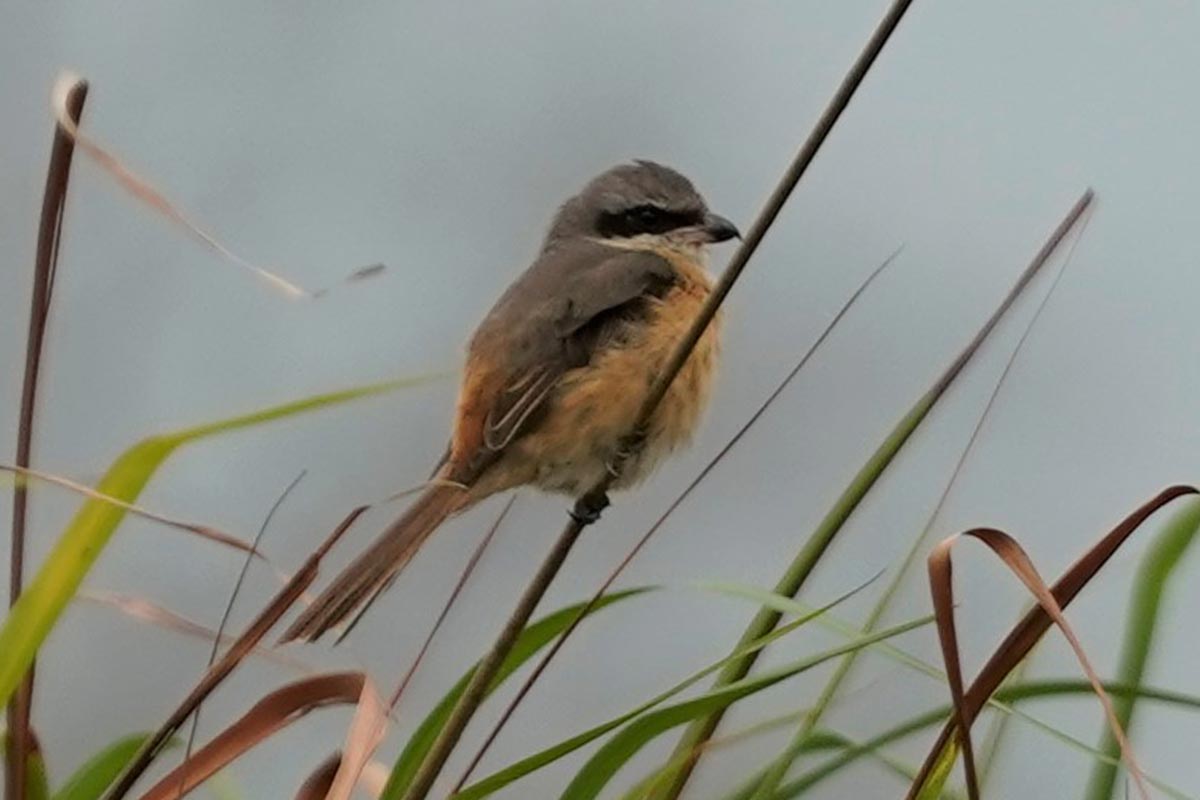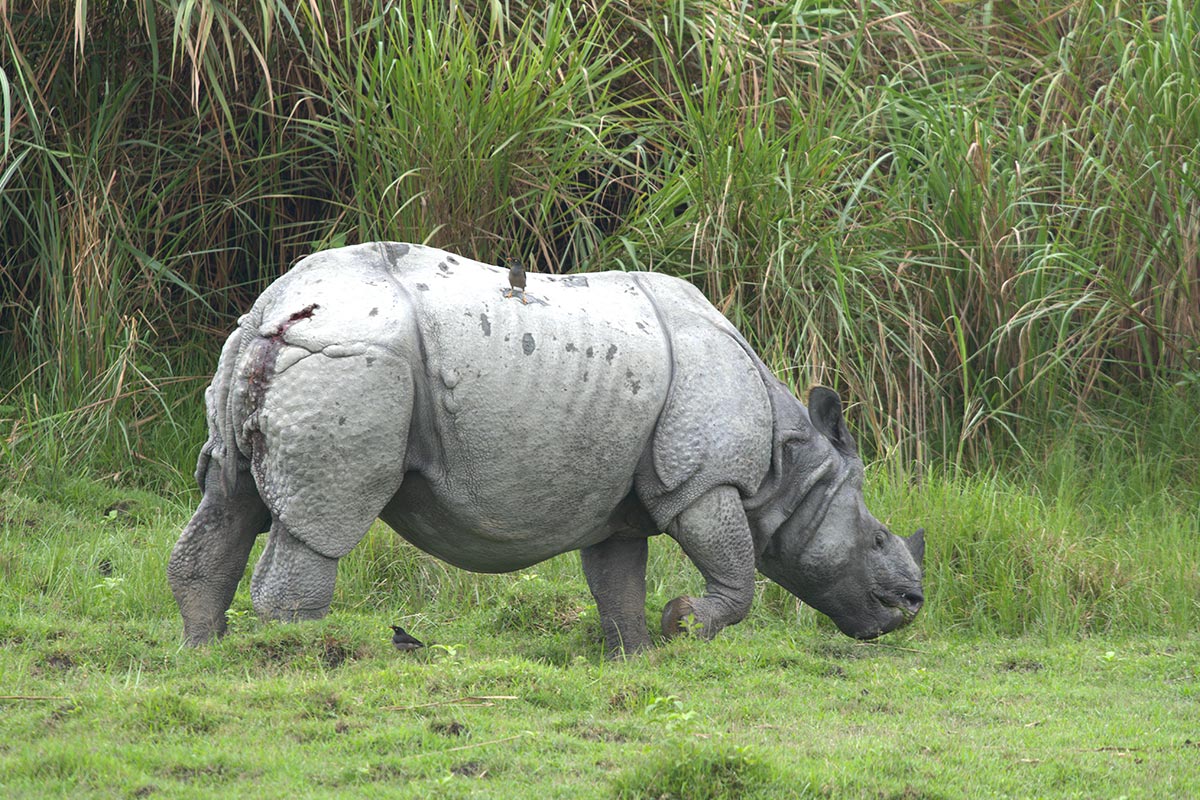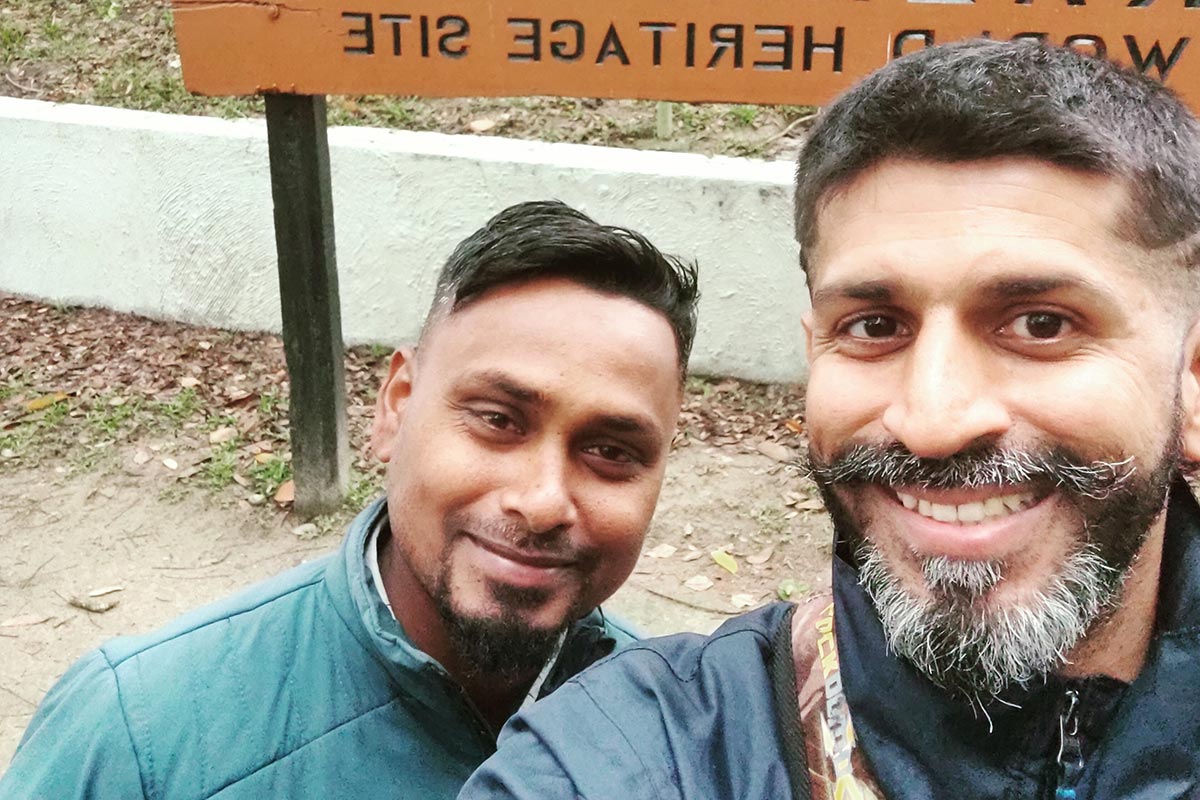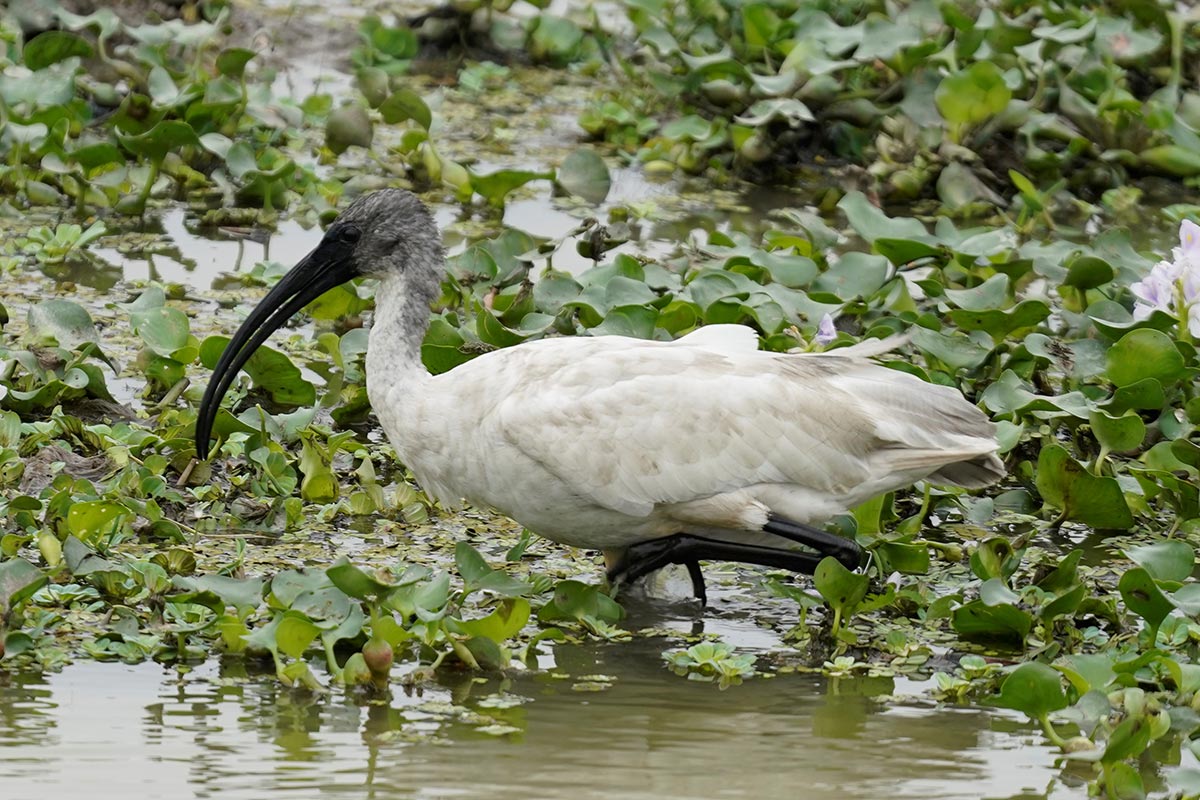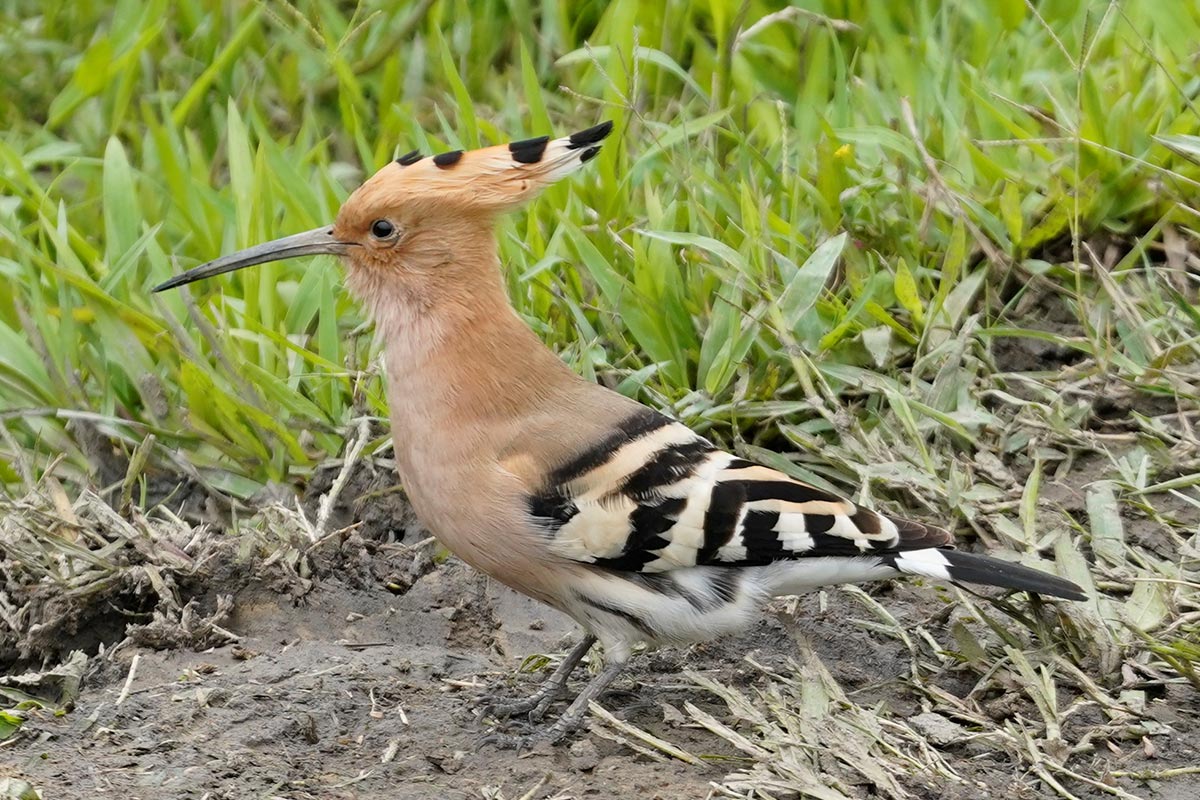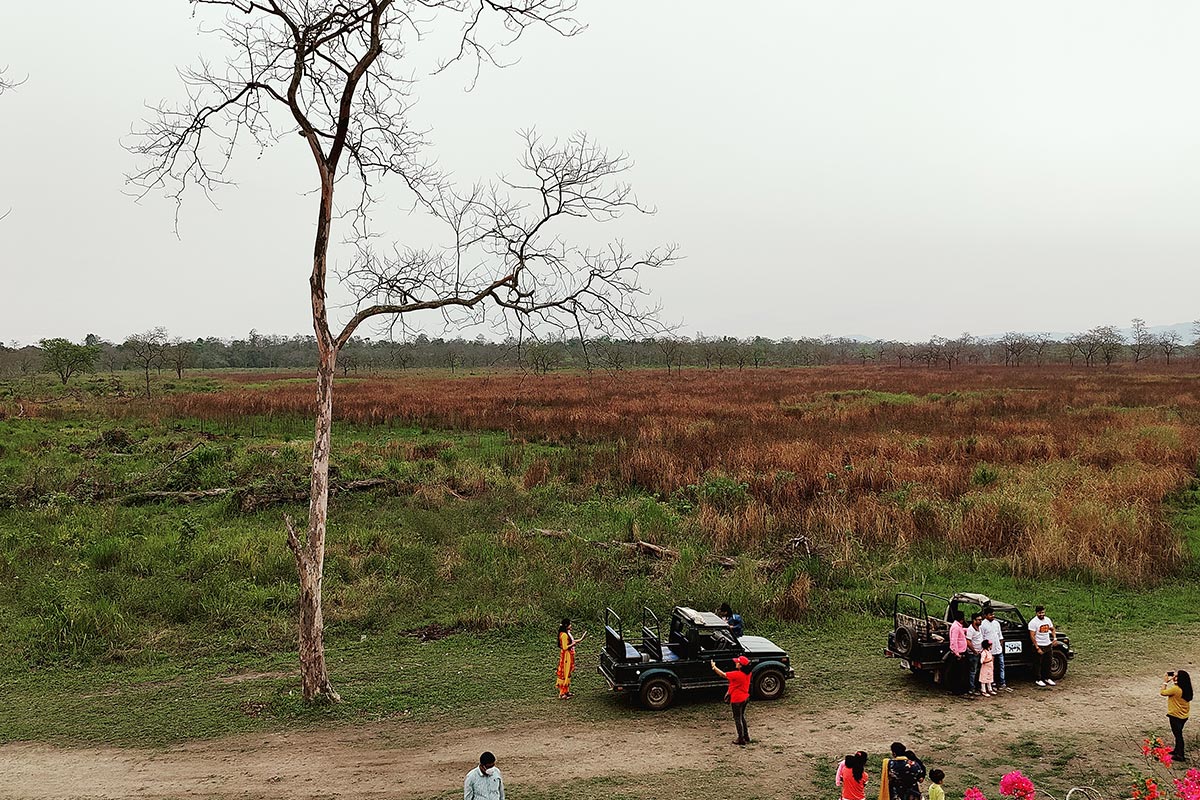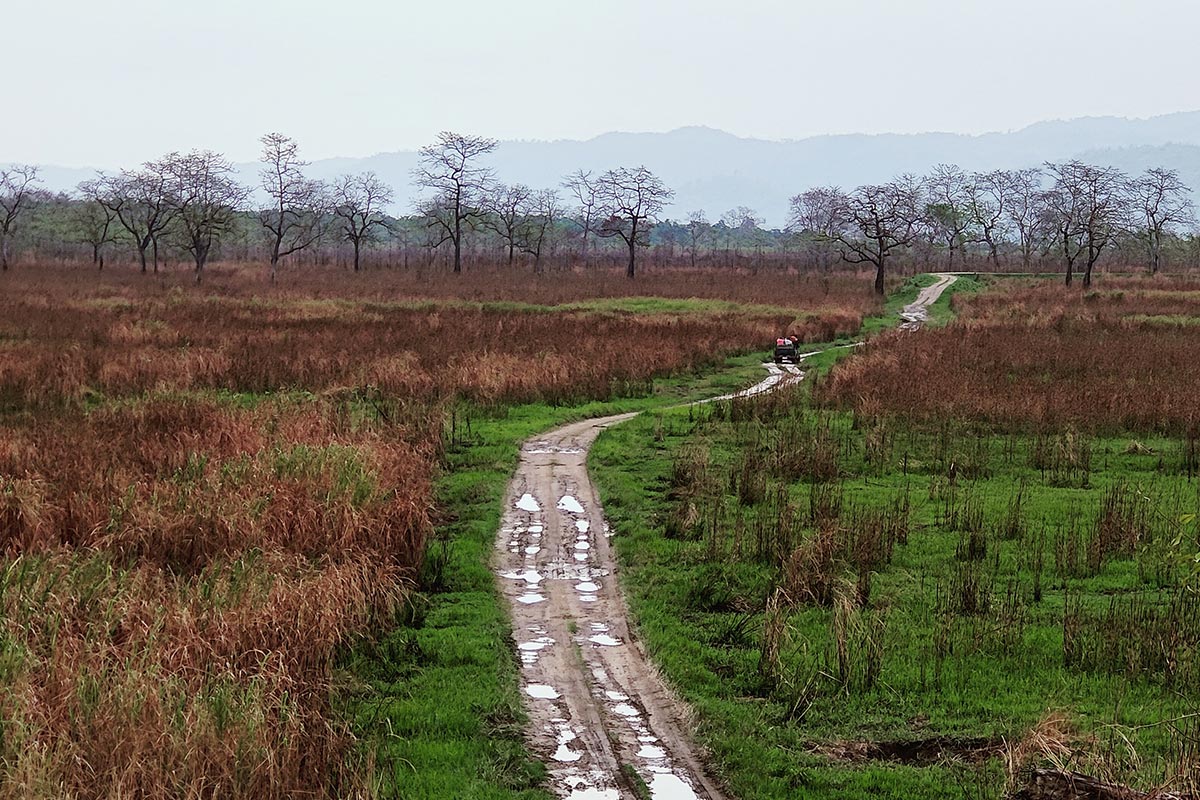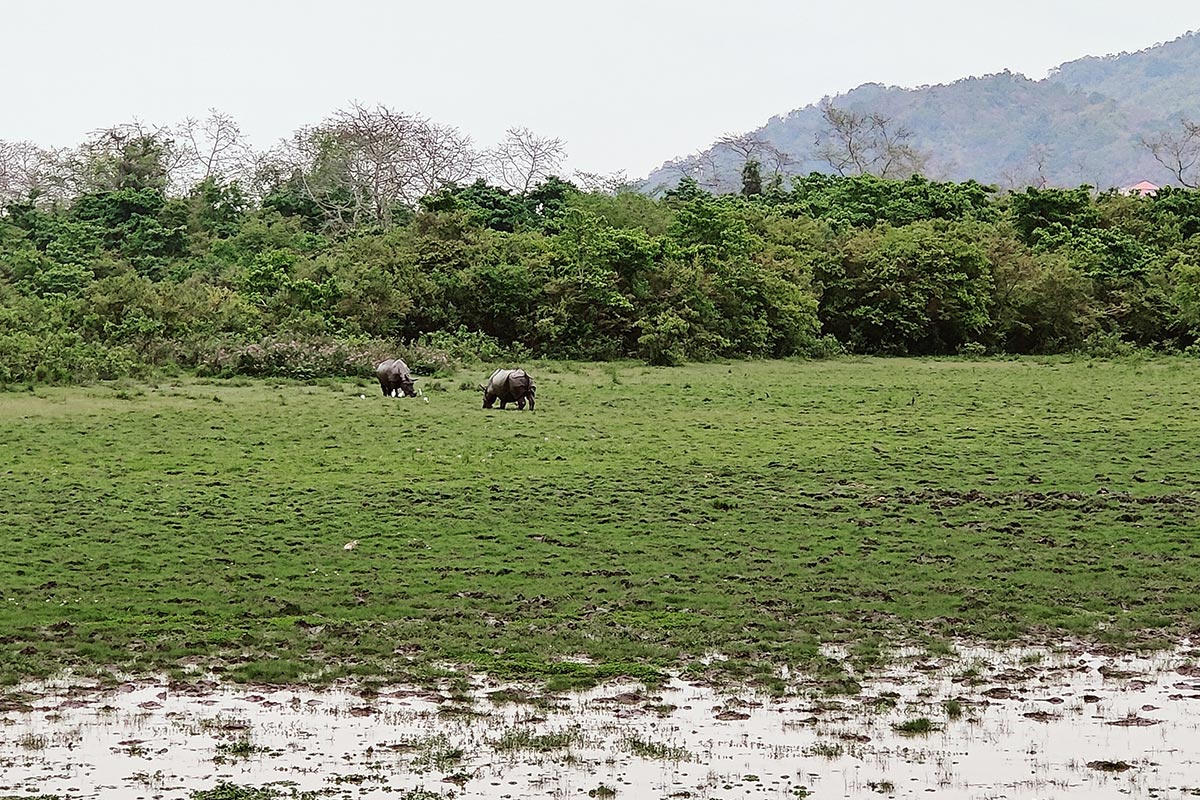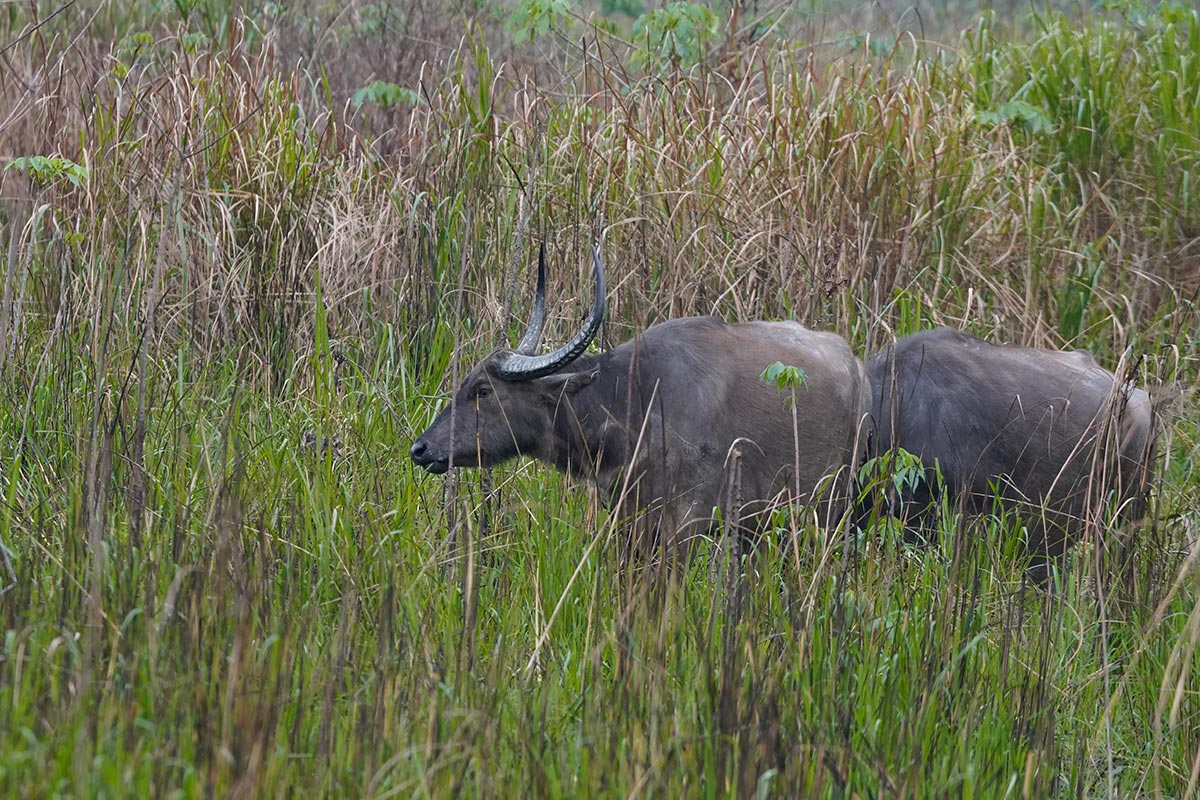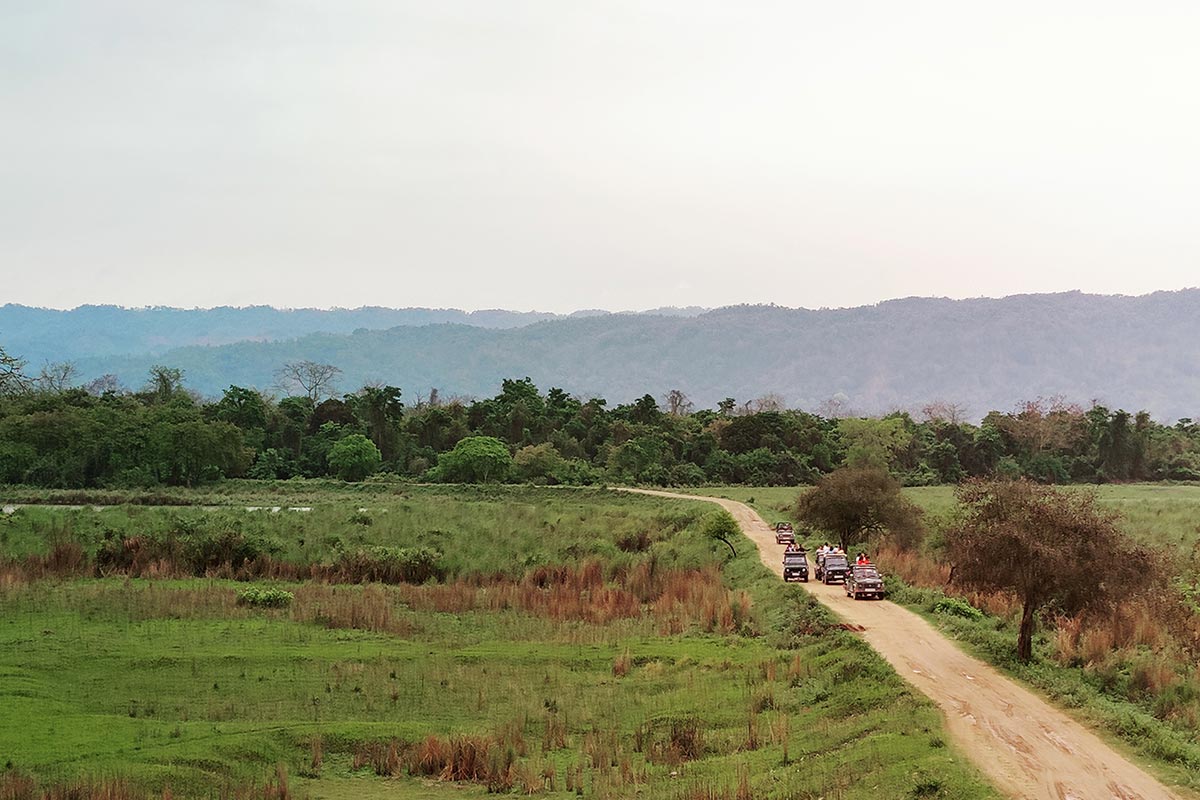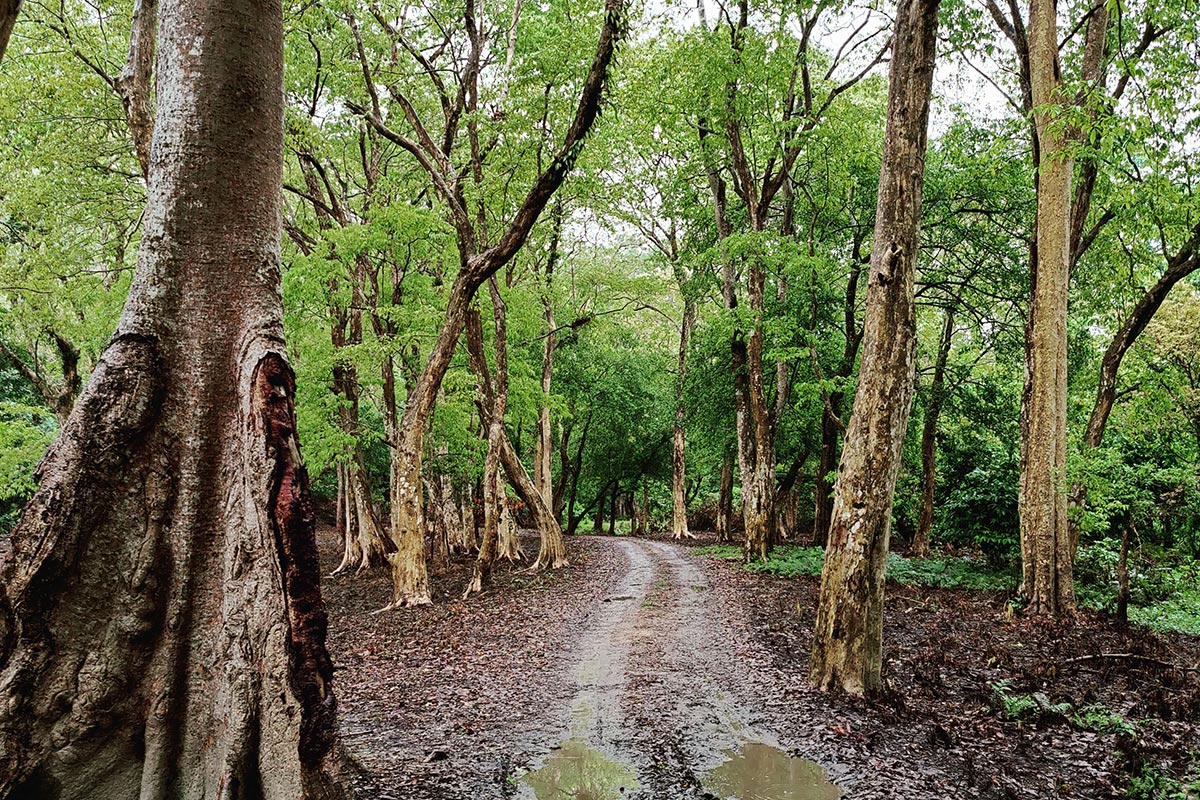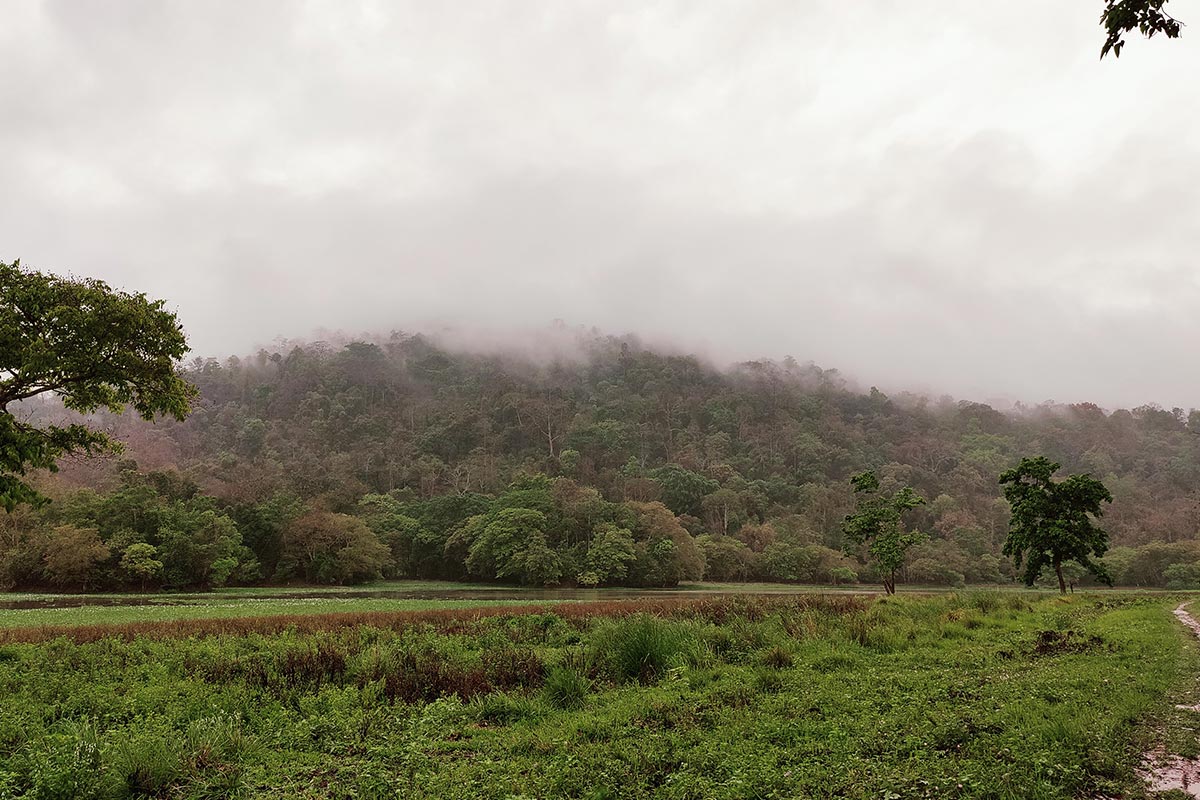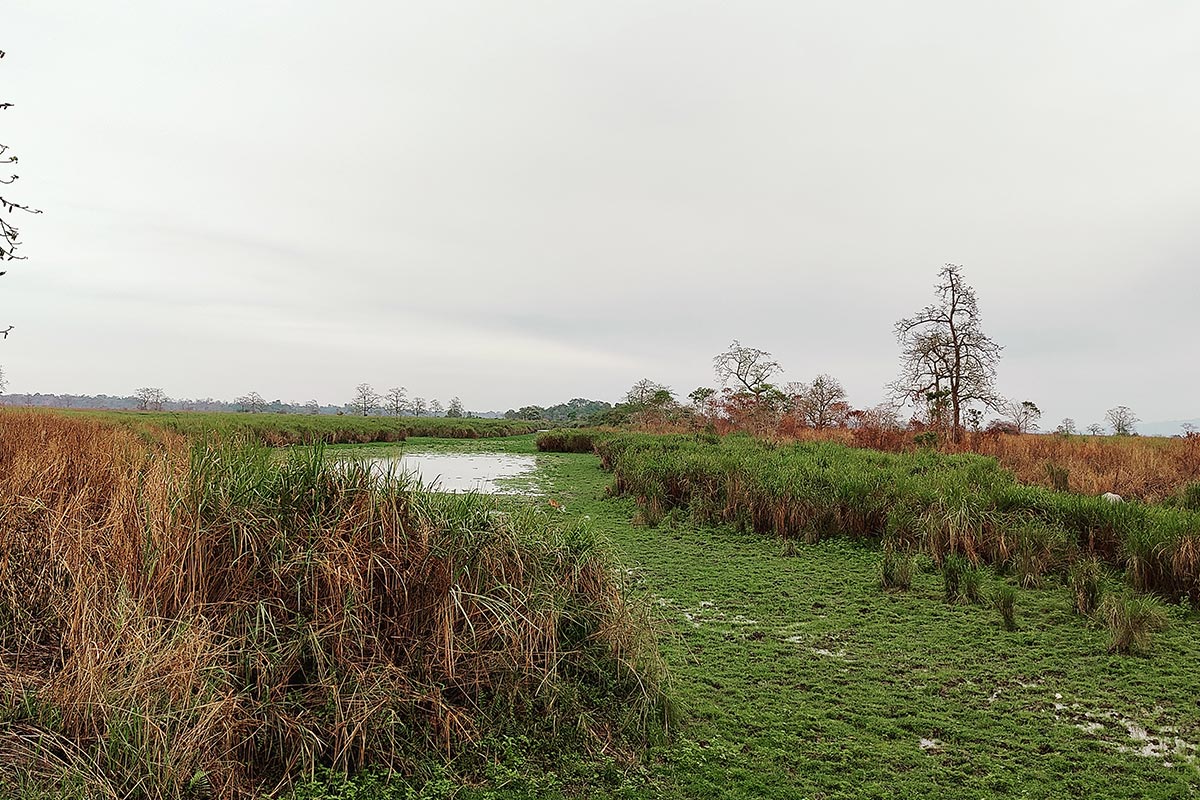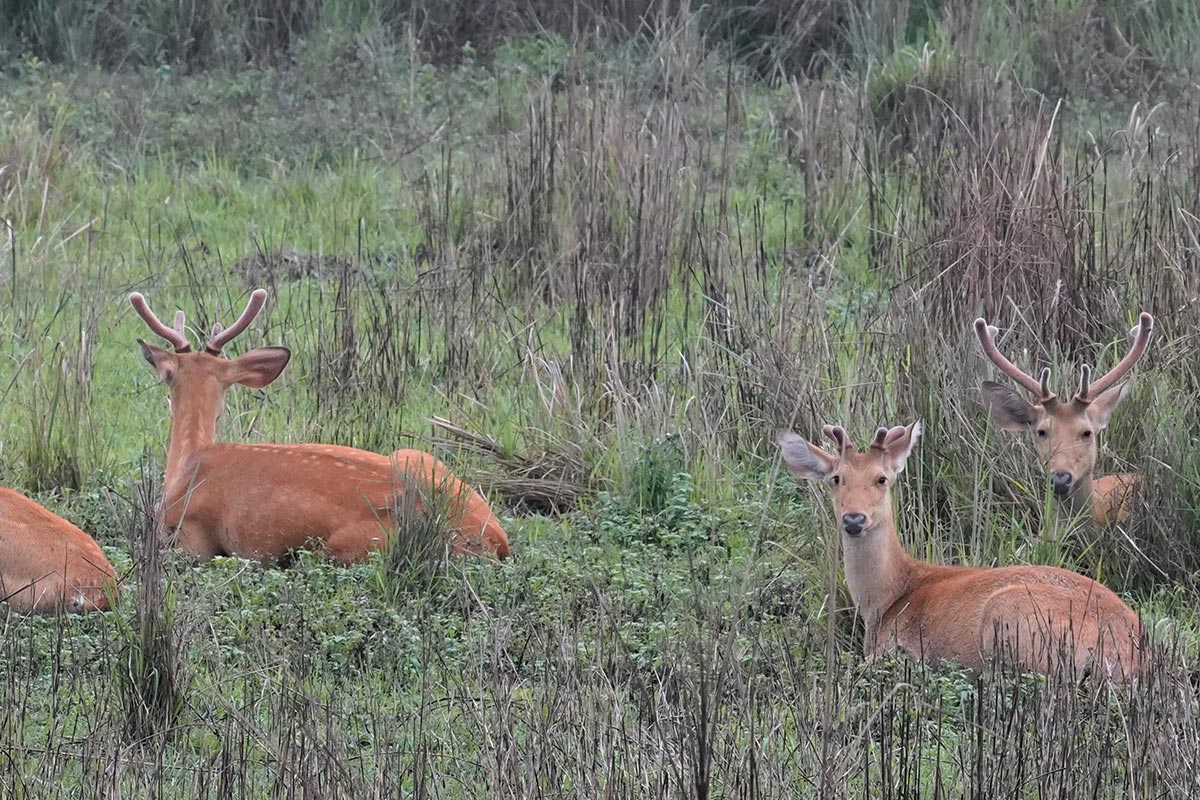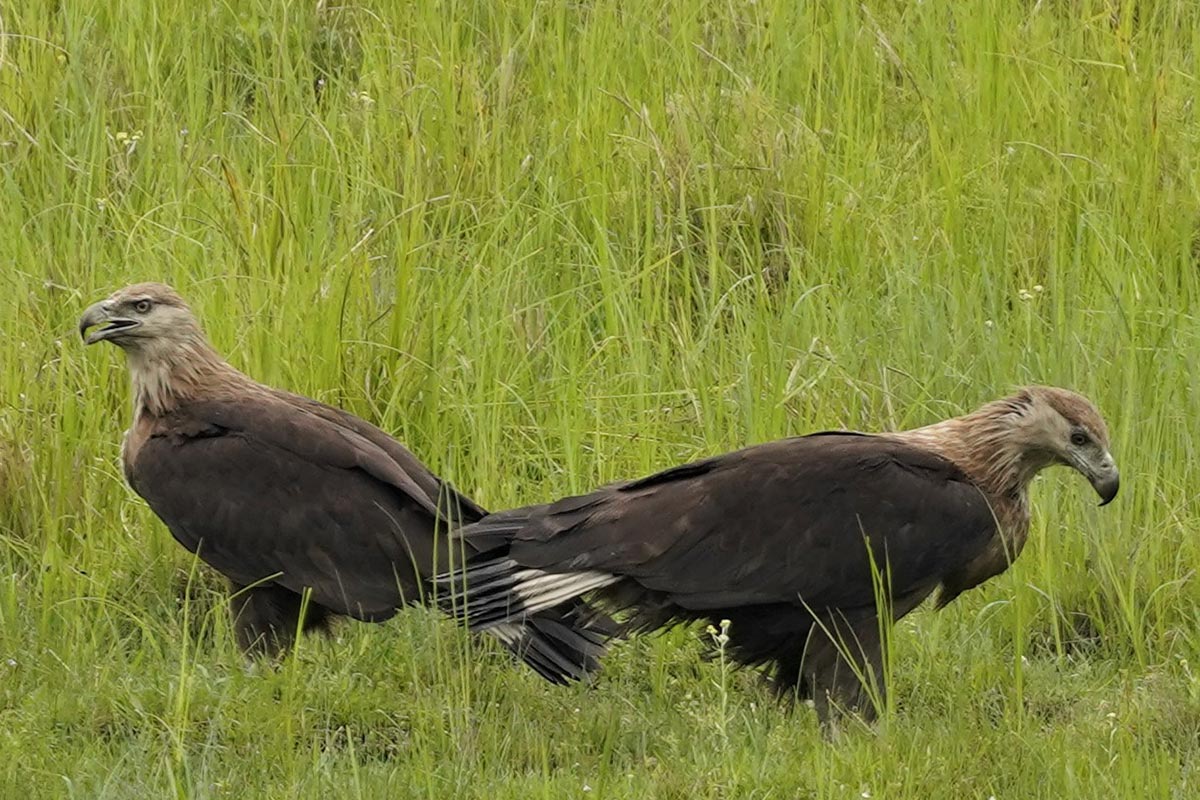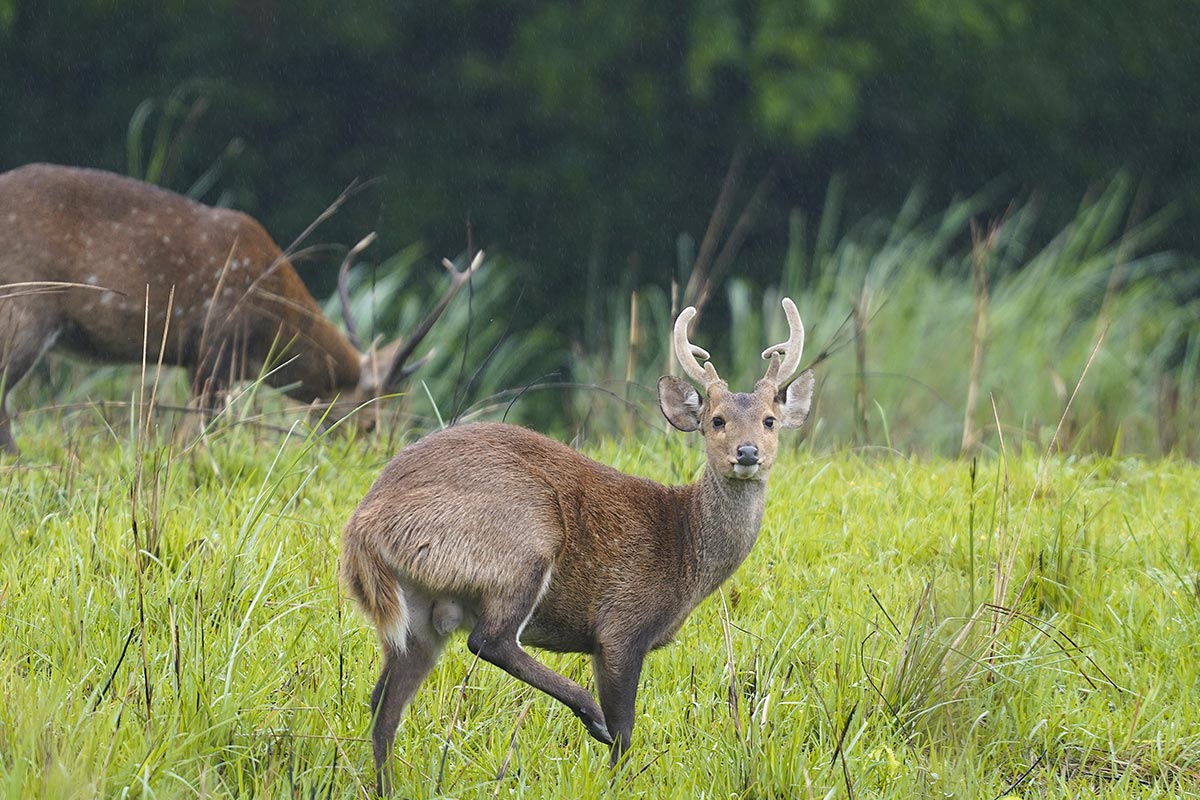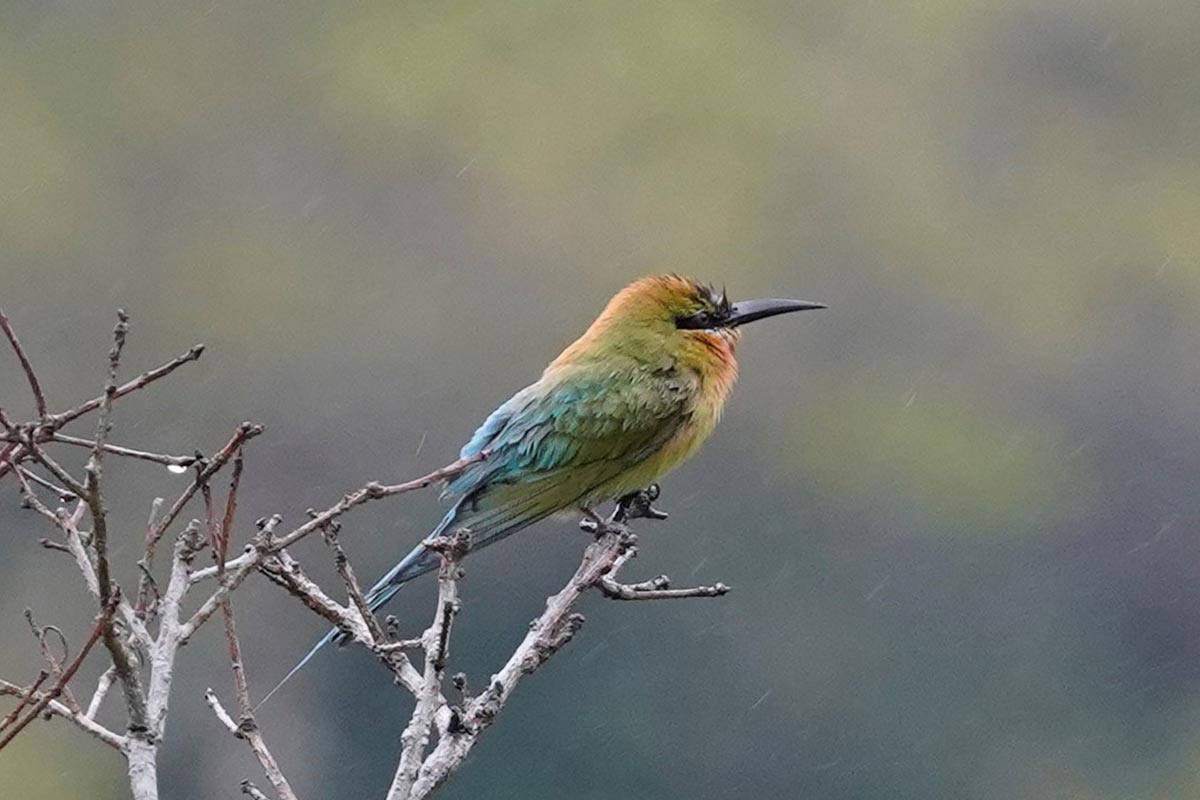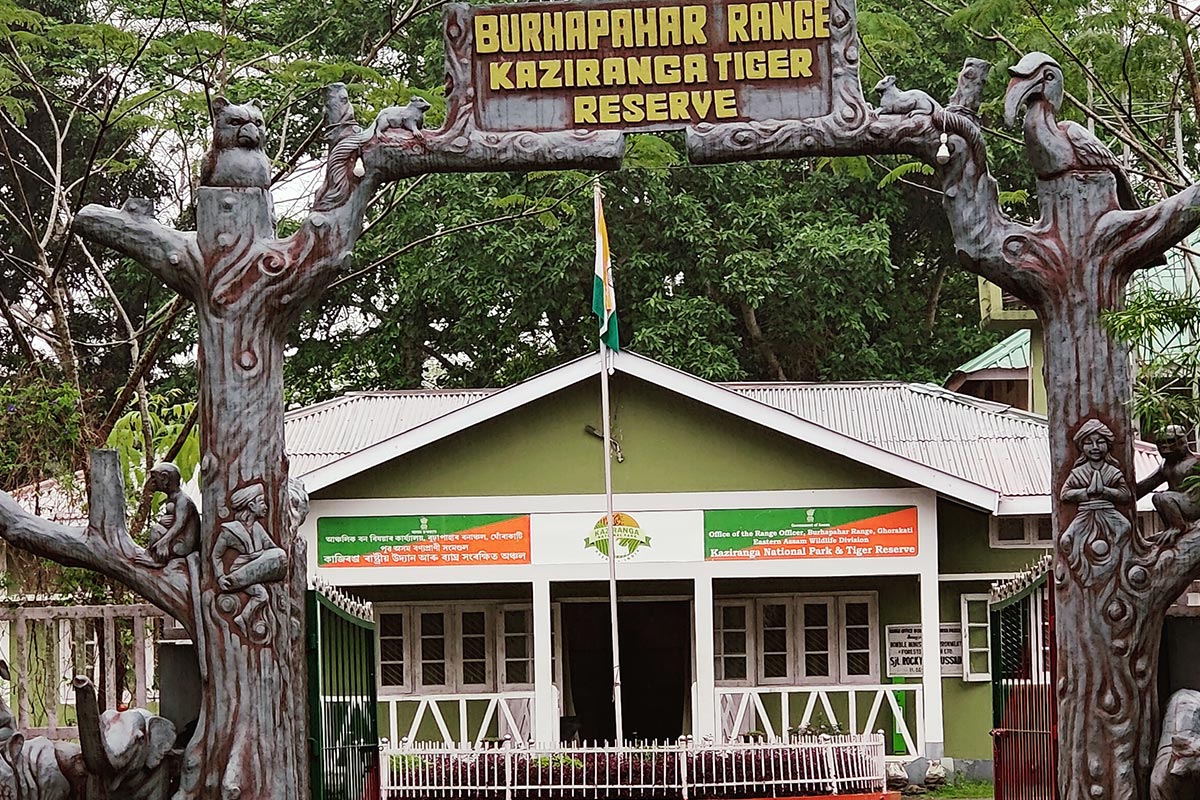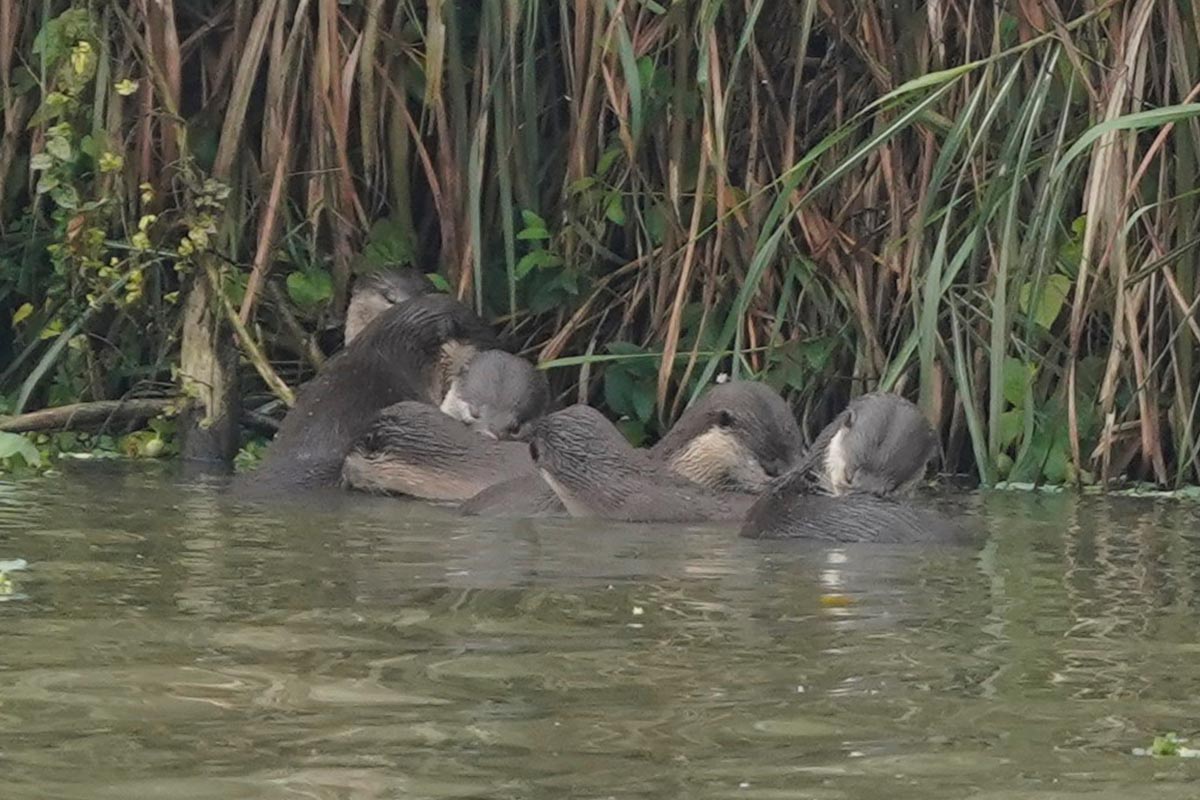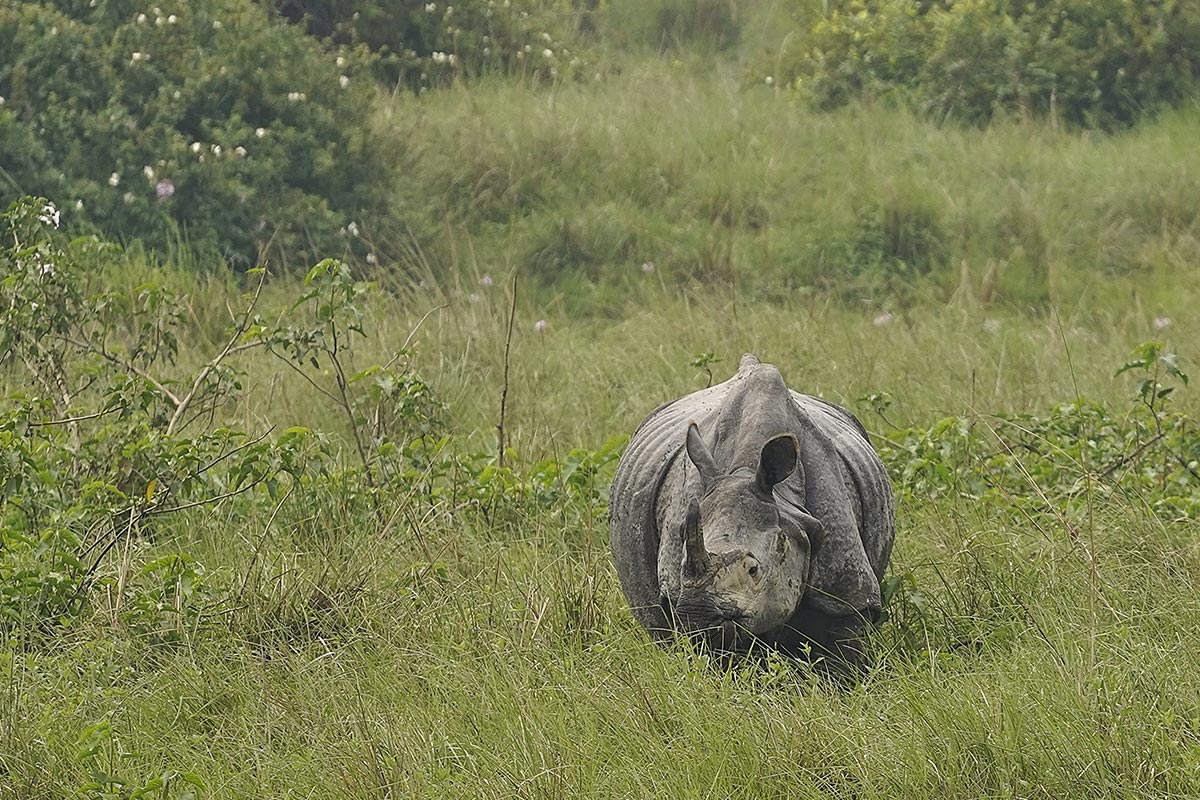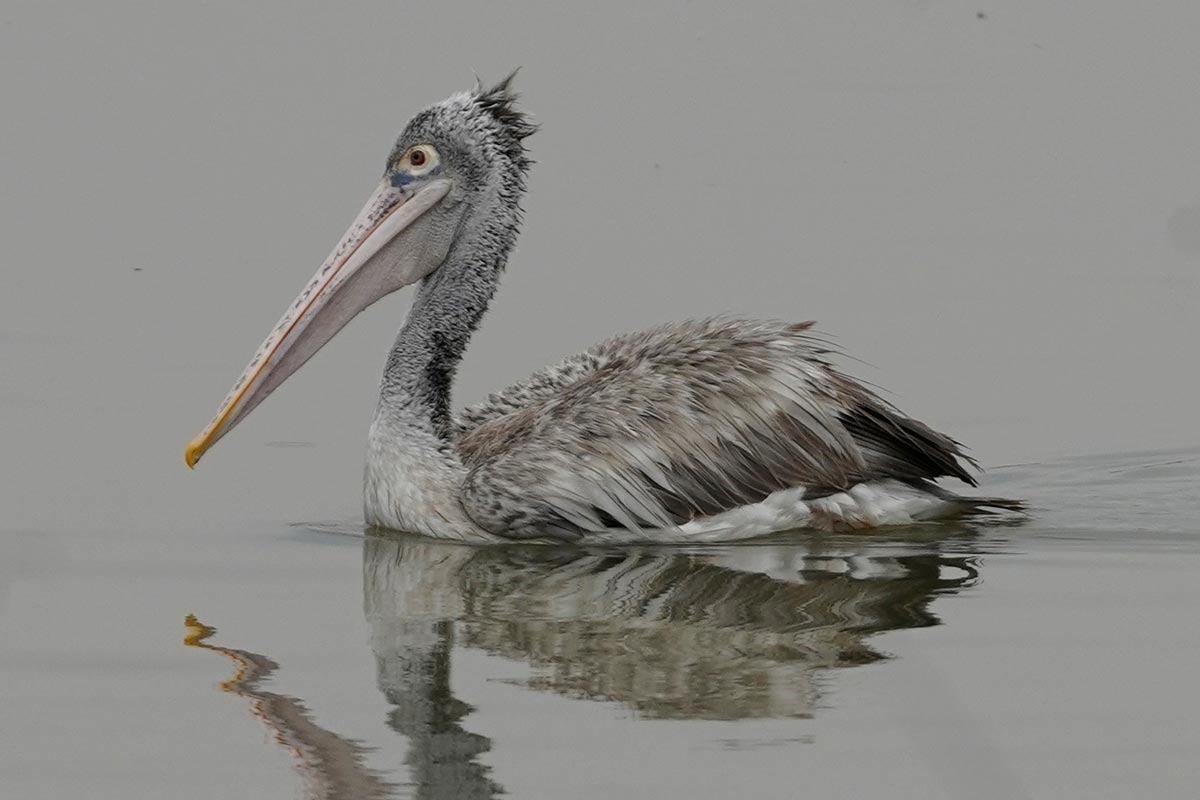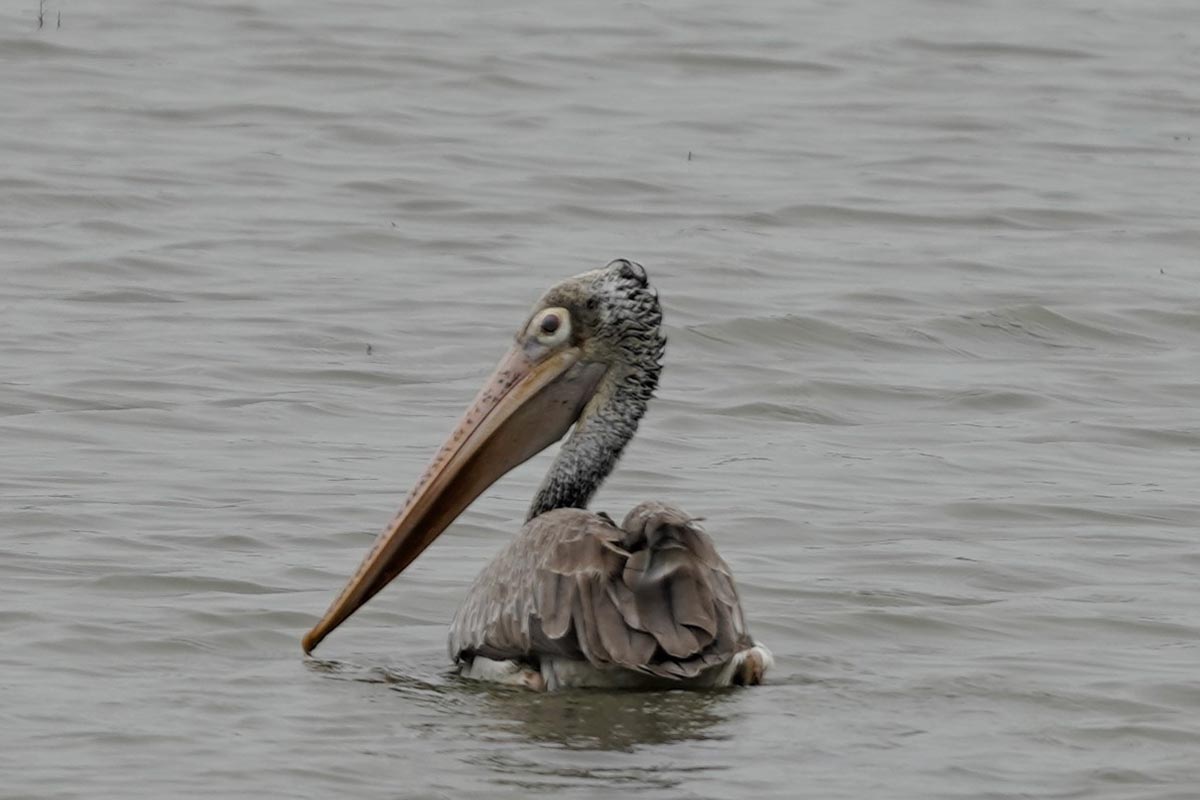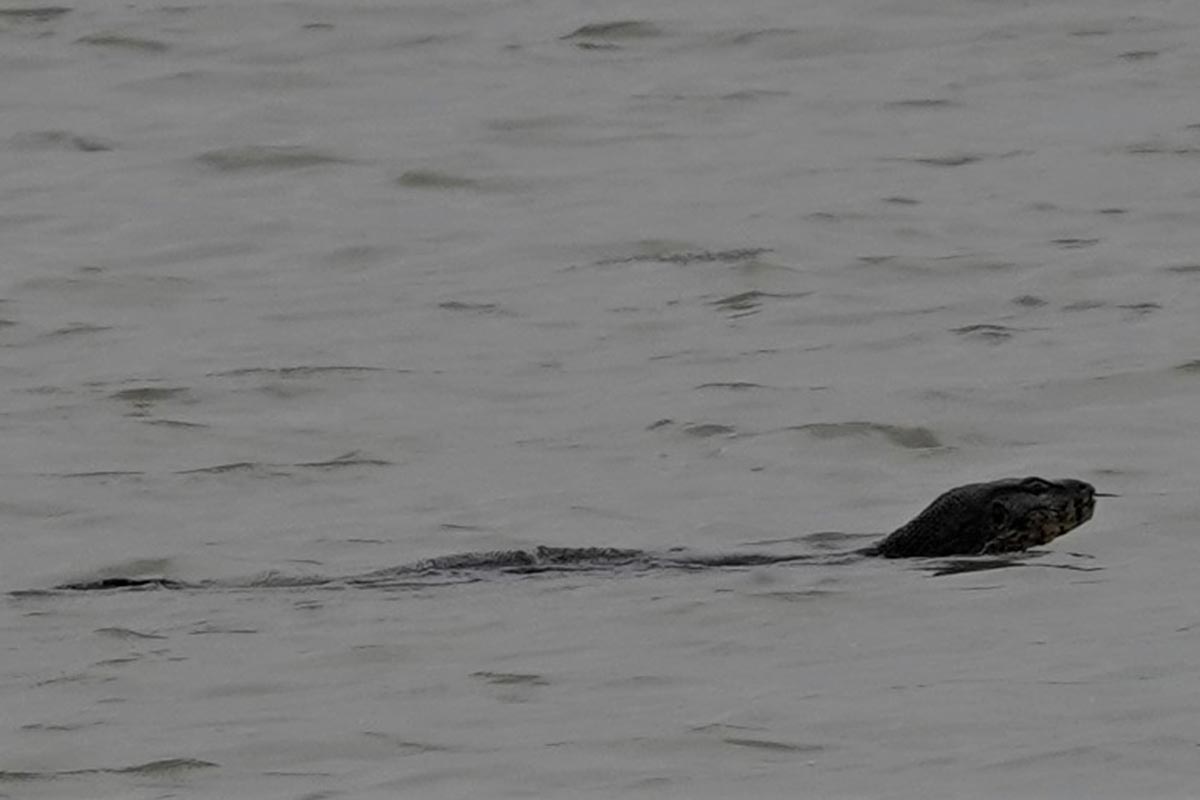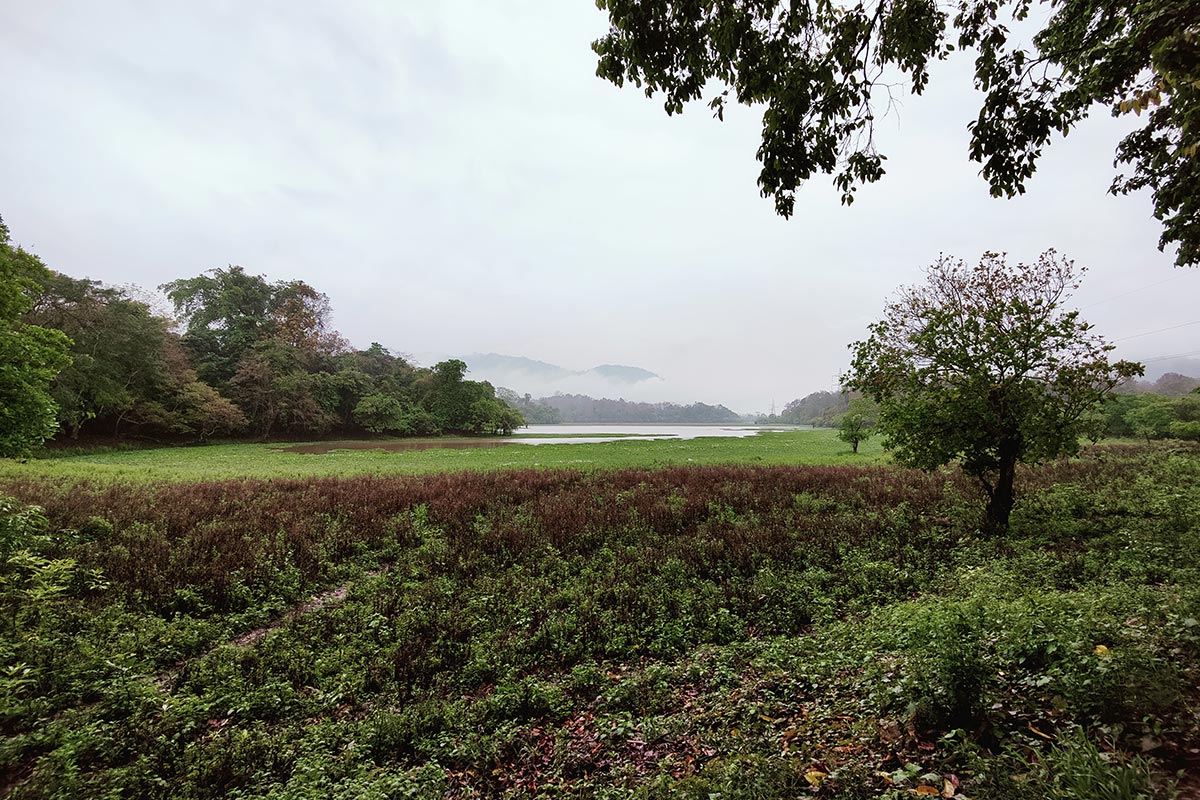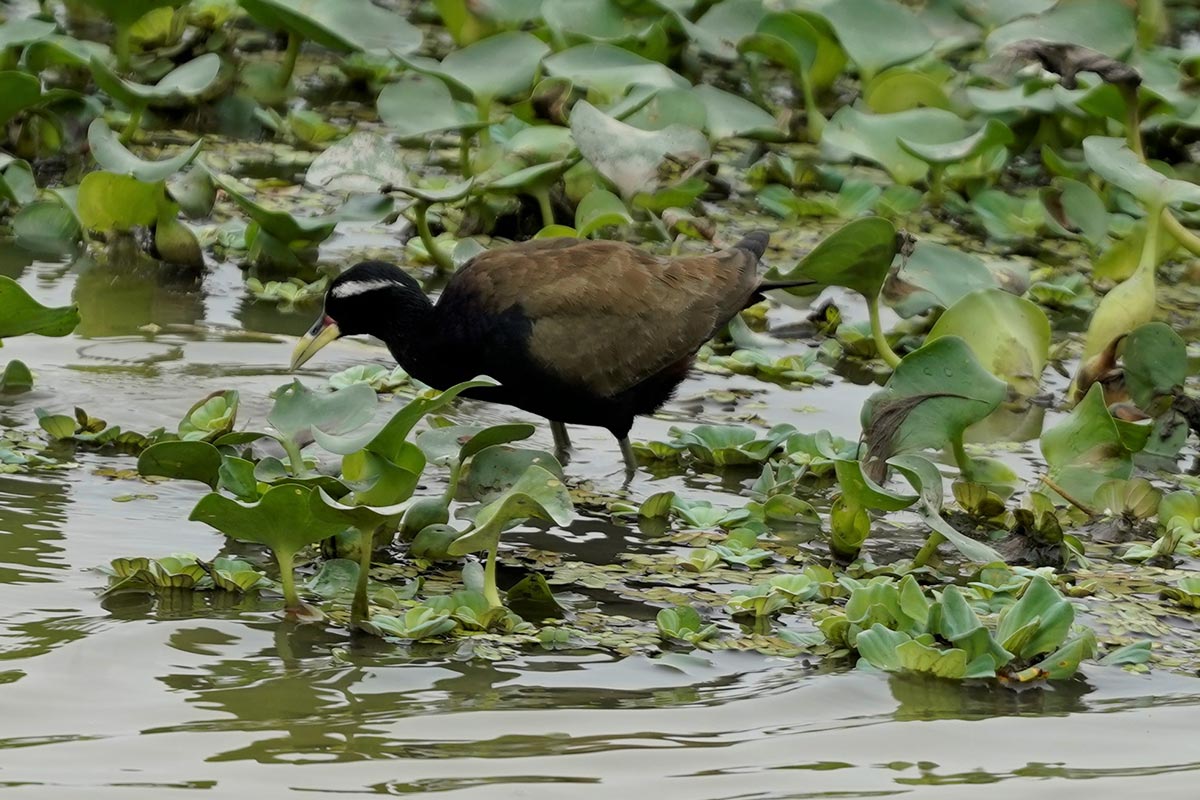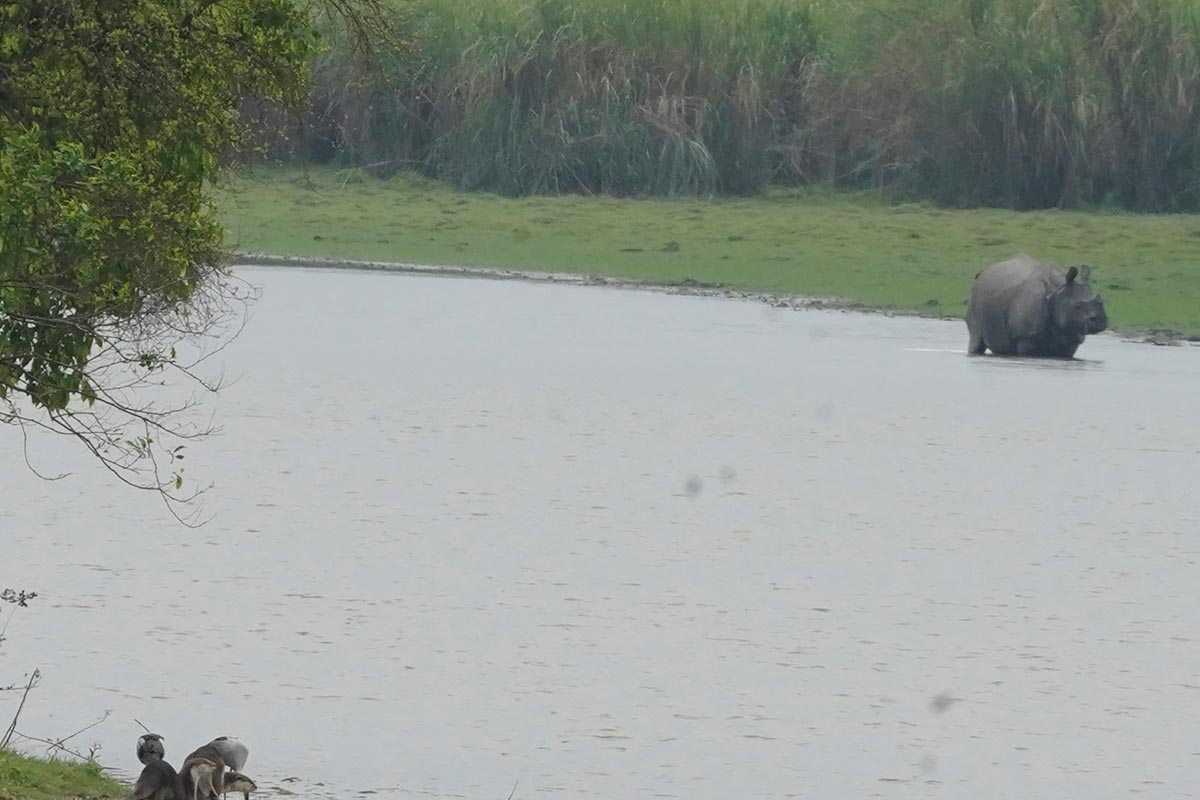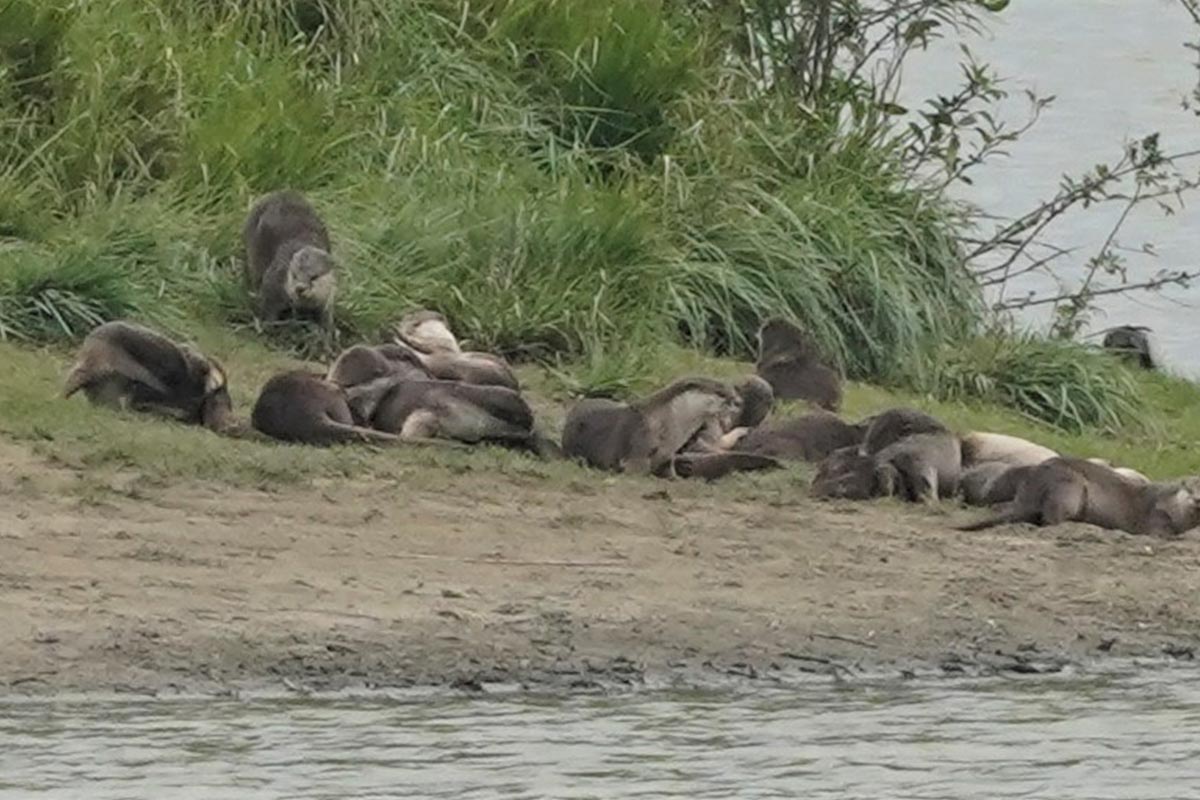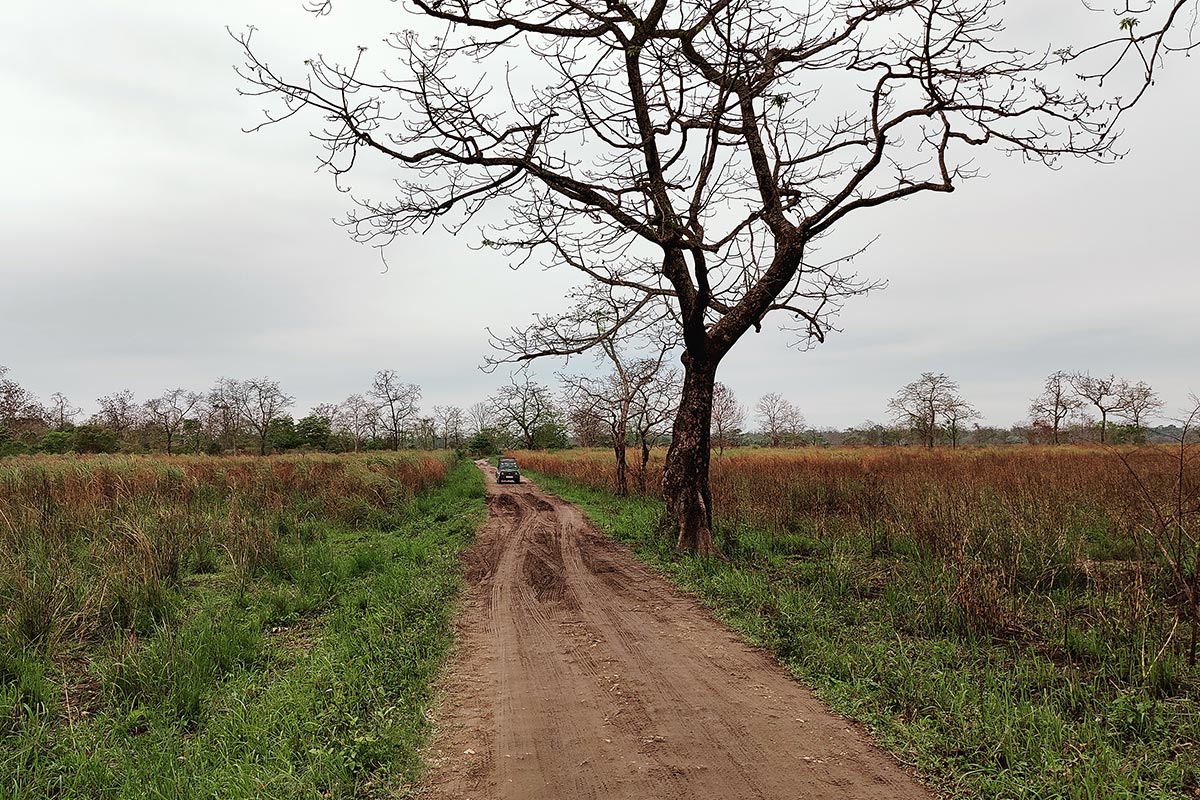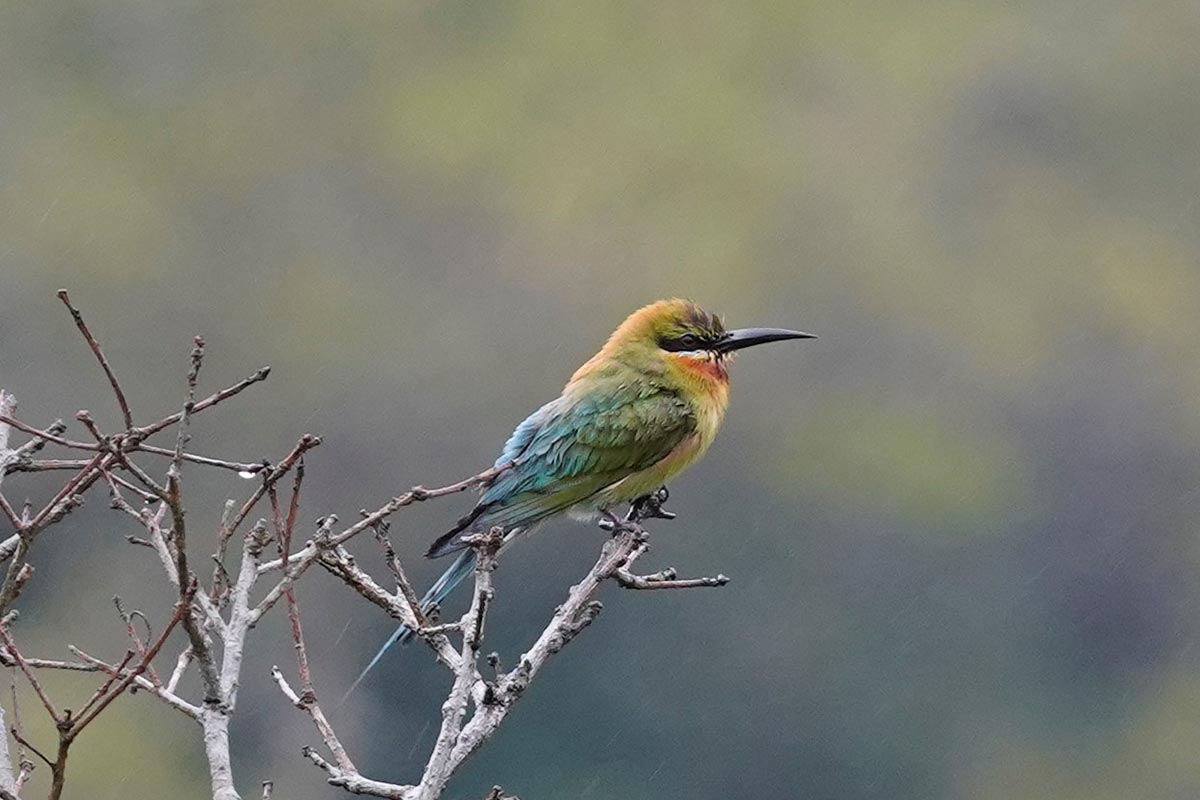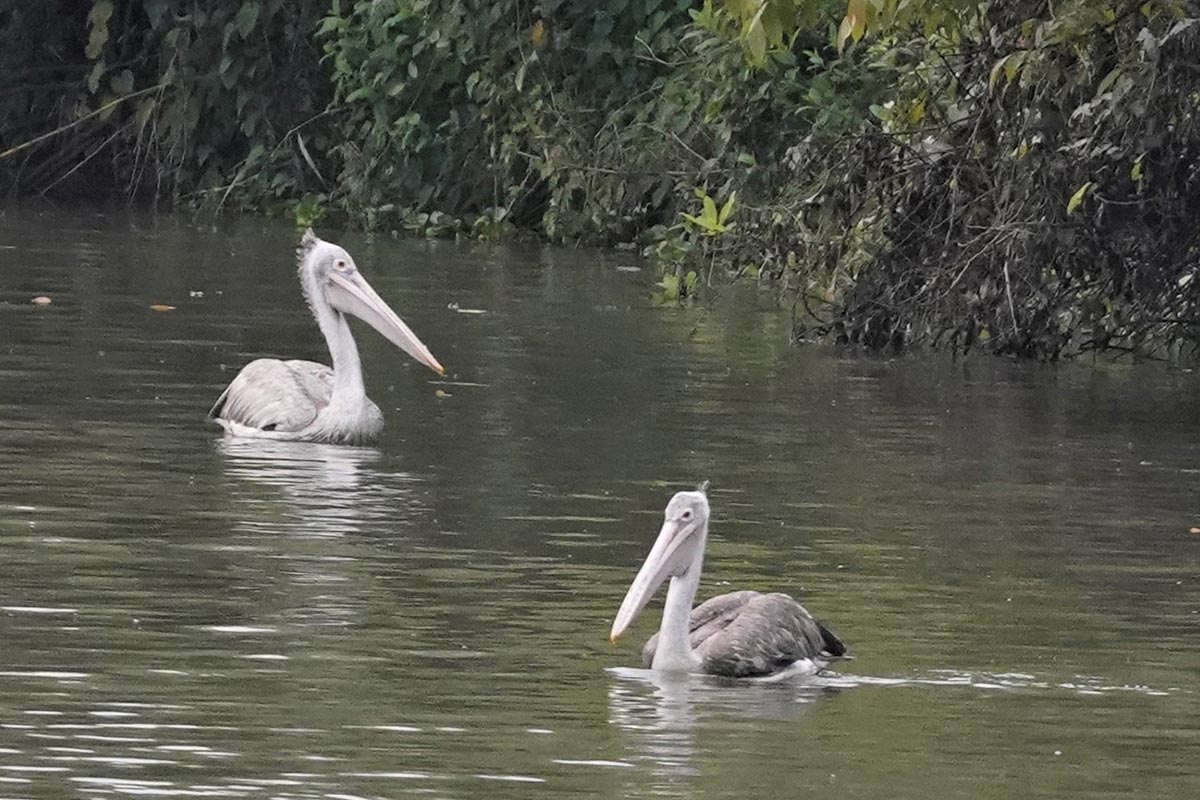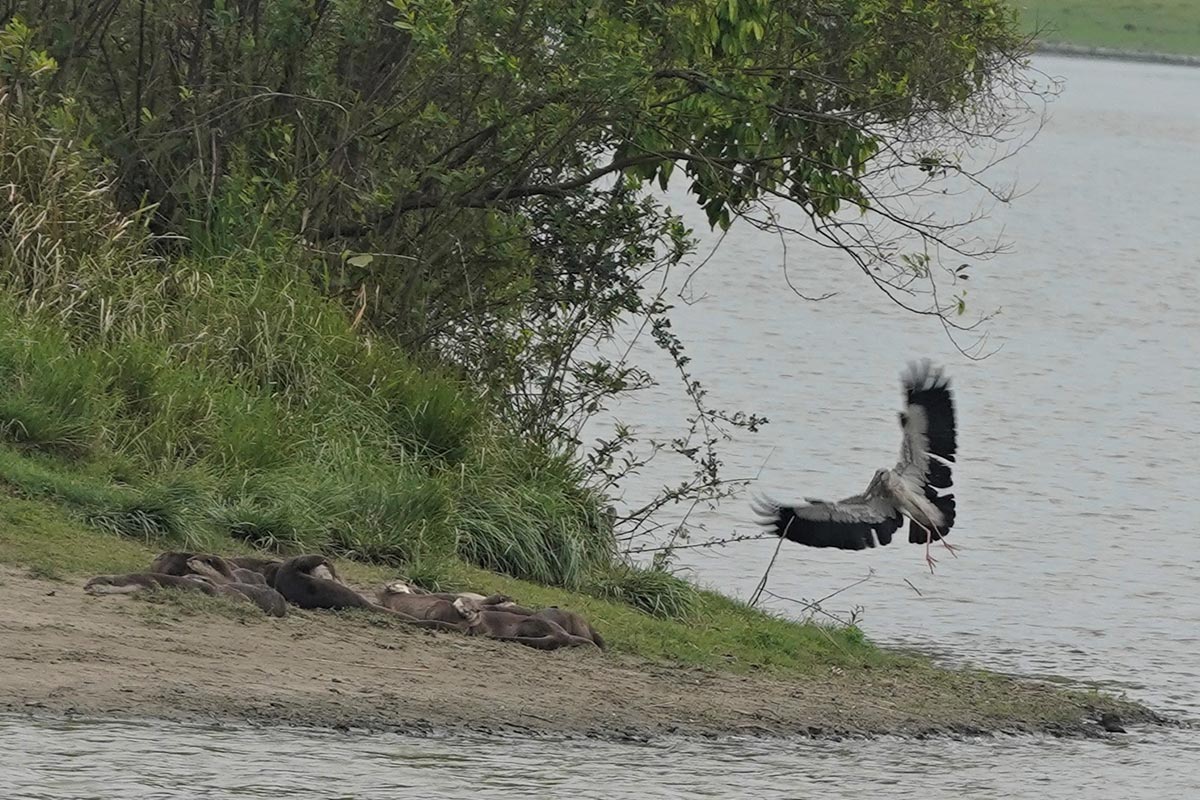2 Nights / 3 Days
2nd Apr to
4th Apr 2022
Hot Days / Pleasent Evenings
4-6 People
Kaziranga, Assam
Introduction
It was nearly 6:00 PM and dark by the time one arrived from Jorhat at Kohora in Kaziranga. The journey had been pleasant with intermittent rain lashing at the windows in between the overcast lulls. Met Nekib Ali jee and decided to find a room. As this was a personal trip, one had decided to look at options when one arrived, as opposed to booking well in advance. Checked a few places, before finally checking into Florican Cottage Lodge in the Main Market Place. Kaziranga being on Asian Highway 1 is a great mix of wilderness with commercial space. Where the marketplace has a host of restaurants and lodges, with regular traffic, just a few hundred metres away lies one of the many Tea Estates that form the green medial between the alluvial grasslands to the north and the Karbi Anglong Hills to the south. The area also hosts 2/3 rd’s of the world’s One-Horned Rhino Population, One of the highest densities of Tigers for a protected area anywhere, Over 50% of the Asiatic Wild Buffalo population, Large herds of Wild Elephants, Eastern Swamp Deer, Hog Deer, Wild Boar, Capped Langur, Hoolock Gibbon, Smooth Coated Otters, King Cobra, Water Monitor Lizards, and over 450 species of bird making it one of the most biodiverse areas in the world, and understandable as a UNESCO World Heritage Site. The Area is divided into 4 Tourism Ranges being Kohora (Central Range), Bagori (Western Range), Agoratoli (Eastern Range) and Burapahar (North Western). Had an early dinner at a lovely restaurant called Mai Hang that served local delicacies that evening, before turning in for the night.
April 2. Morning. Burapahar Range.
Awoke early the next morning after a long night, with the electricity having gone off and mosquitos ravaging one up. However, it was all forgotten as soon as one got out and started driving across the emerald green tea estates and forests that responded with even greater resplendence under the heavy rain clouds. Burapahar Range was 40km from Kohora, and a good hour long drive. The highway being elevated allowed one to constantly look into the floodplains and catch glimpses of One-horned Rhinos, Wild Buffalo, Hog Deer and a host of birds like Egrets and Herons in the wetlands, while the dense hill forests of the Karbi Anglong kept their mysteries under cloak with the misty fog of moisture.
Hoolock Gibbon Sighting
Burapahar is the only range in Kaziranga where one can see the endangered Western Hoolock Gibbon, and that too close to the highway. Soon, we parked at a spot where the Gibbons were usually seen and waited. A phone call 20 min later and we were told that a family of Gibbons had been seen at a spot we had passed a few km away while coming up. Getting to the spot, we managed to get glimpses of the family as they moved around in the forest 60m inside. However, the clouds were heavy, and so the light penetrating through the canopy very little, and so the views were brief and distant. They then went further in and out of sight, with the rain soon to follow. It came down heavily as we sat under the covers of the gypsy debating our next move, before finally deciding on going on ahead and exploring Burapahar Range anyways.
Mammals and Birds Post a Heavy Downpour
The decision turned out to be a good one, as the rain ebbed into a drizzle and allowed one to appreciate the stunning blend of grassland, hill forests and Brahmaputra flood plains under the beautiful overcast sky. The wildlife included super and close up views of multiple Hog Deer, Wild Buffalo, and Swamp Deer, as well as a lone Elephant. The birds offered up great views of Blue-tailed Bee Eater, Great Myna, Changeable Hawk Eagle, Tree Pipit, and constant fleeting and trilling Scarlet-backed Flowerpeckers. Fell asleep multiple times on the road back due to the lack of the same the night before, and got in a couple of hours of down time back at the lodge after being reassured the electricity glitch was a one time thing, and I could rest easy from hereon.
April 2nd . Afternoon Drive. Kohora (Central Range)
Getting our tickets from the range office, we set off for the afternoon safari, spotting Blossom- headed and Red-breasted Parakeets along the way. The Central Range was currently the most popular among tourists due to its very regular tiger sightings as compared to the other ranges, and the host of jeeps that crossed us throughout our safari was evident of that popularity. The Central Range gate area was also one where the sightings of the Bengal Floricans regularly took place.
Vigil in hope for a Tiger
The Floricans remained elusive today, but there were plenty of One-horned Rhino, Wild Buffalo, Swamp Deer and Hog Deer to be seen. The skies cleared an hour later as we reached further inside and then spent the rest of the afternoon on a track separating 3 Grasslands as there were intermittent alarm calls of Hog Deer signaling the movement of a tiger in the grass. At one point we an angry set of grunts from a Rhino within the tall grass set our senses on further alert to a possible appearance and crossing of the tiger. However, when a figure did appear 20 min later, it was the dark grey armour of the rhino itself as it now calmly foraged for food and nourishment. We didn’t see a tiger that afternoon, but the anticipation of it’s appearance, all the while knowing of it’s presence close by took one back to the pleasures derived from patiently listening to the wilderness and enjoying the messages it sends to you. Our evening winded down outside as we drove to check out a couple of lodges before treating ourselves to some fantastic Chicken Momos at a Dhaba where the seats were a mix of wooden benches and smoothened out tree stumps.
April 3rd . Morning Drive. Bagori (Western Range).
This Morning I was guided by Nekib Ali jee’s brother Tokib Ali, as Nekibjee had a prior commitment to another set of guests. Tokib Ali though is currently unofficially known as Kaziranga’s Tiger Whisperer, because of his amazing record built via tracking alertness,
knowledge and tenacity over time. With the aim of seeing as much of Kaziranga as possible, we took our wheels to the Western Zone about 15km (30 min) away.
Rhino Haven
The Western Zone was currently most famous for its Rhino visibility numbers, and that was obvious from the moment one drove in and drove out a few hours later. We saw close to 18 different individuals in and around the first km after entering the gate, and close to 30 overall during the course of the morning.
Smooth Coated Otter Family
The highlights of morning were however best observed and enjoyed from a track area we stopped along on the edge of a river channel that cut through and divided two grasslands on the opposite side. The opposing beach was 100 odd meters from where our vehicle was stationed. It was then that Tokibjee pointed to a large lump rising out of the sand on the opposing beach and said those looked like Otters to him. Focussing the binoculars onto the opposing bank and looking at the spot one saw the Smooth Coated Otters piled onto one another as they slept. They certainly looked spent from what one could see, and weren’t going anywhere in a hurry, so one kept observing the various birds like River Terns, Asian Openbill Storks, Common Greenshank, Indian Pond Heron, and Indian Spotbill Ducks around. The Otters began stirring around 20 min or so later, but it was still lazy and one odd individual who would walk a few steps to defecate before heading back and lumping itself cuddlingly into the family pile.
Elephant Alarm signaling possible harassment by a Tiger
During this time we started hear distressed roaring trumpets from the patch of forest 200m behind us. It was elephants, and their trumpets were screaming out intermittently from the depths in the forest patch each time. It was then that Tokib Ali jee explained that they were probably being harassed by a tiger who was targeting one of their calves, and each time they smelt the tiger closer than otherwise you heard the trumpet of distress. Exciting as it would have been to witness firsthand, the sounds were coming from far too deep inside for us to have a view, and so we just continued to put together the scene possibilities within our imagination and observe the Otters in front of us.
Otter Family Hunt
The Otters had been awake for a while now as well, and were playing and reinforcing the family bonds amongst all 18 of them as we counted, before heading into the river channel one by one. It was here over the next hour that they gave us a wonderful insight into Otter fishing strategies. Multiple Chases, Coralling, changing direction when the fish escaped from a possible
corral, and finally catching at least 3-4 large fish, feeding upon them, and then heading back in for more. During this time we had a Rhino come into the water channel behind for a wallow. Two different Tuskers move in different parts of the grassland across, and a very special scene with a herd of 15 Elephants and a tiny calf just a few days old and barely able to walk, and then watching them support it and literally carry the calf across a more than 6ft deep and 50m wide water channel from one grassland to the next. We drove on after the Otters disappeared from view once they went into another part of the channel further in. The rest of the morning was highlighted with some wonderful bird sightings and observations alongside more Elephant and Rhino sightings.
Birding Highlights
The major bird highlights were lifer sightings of a pair of Abbott’s Babblers when crossing a woodland. Then post a real struggling skid to get up onto an embankment because of the previous night’s rains, we ran into a pair of Pallas’s Fish Eagles who had usurped the fishing area of a pair of slightly smaller Grey-headed Fish Eagles. The Pallas’s Fish Eagles fed on a freshly caught fish on the open ground between the river channel and the track. Every couple of minutes the pair would ring out their high pitched call announcing their stake at the ground and it’s catch, and were followed almost each time by the Grey-headed Fish Eagle pair calling out in protest and complaint from the trees nearby. A wonderful lesson in the laws of the jungle over the course of the morning.
April 2nd . Afternoon Safari. Kohora (Central Range).
Being the final safari of the trip, we decided to aim for Tigers and headed into the Central Range that afternoon. We had gone upto the first watch tower a few km in when Tokibjee got a phone call letting him know of a strong Swamp Deer and Hog Deer Alarm from the Grassland Beel near the gate. This particular grassland beel was also the territory of the “Golden Tiger”. This particular tiger was not golden, but had a much paler coat than the normal ochre orangish yellow mix, due to a recessive gene mutation. It had recently been seen with a normal coloured tiger thought to be its mate, and so this was what we expected. However he was told the call had gone quiet as of now, but hope of it’s presence lay strong.
Four Otters harass a 6ft Asian Water Monitor
We decided to slowly head back to the gate, and as we crossed a small wooden bridge on the way we saw an Otter swimming in the channel and crossing it below us. We soon saw it swim toward the short embankment nearby, where there were 3 others in the water near the bank edge 40m away and feeding on a fish. It was then that Tokibjee suddenly said, there’s a massive lizard near the Otters. Looking through the binoculars to see better, one soon noticed the same. A massive tail of a 6ft Water Monitor as well as quite a bit of it’s body lay on the embankment just a few feet from 2 of the feeding otters. It’s head was hidden by some of the bushes, so one was unable to see it’s reaction as the Otters kept bobbing up and down in alarm having clearly noticed it. A minute or so later it crawled up the embankment walked a couple of meters and then went back down again, this time hidden from not just our view, but the Otters as well.
Tigers Sighted. Finally
A couple of minutes later we decided to continue on back to the gate as Tokibjee heard the calls of Swamp Deer coming again from that direction. A few minutes later we were up on the short elephant mounting post and using it as a watchtower alongside a film team making a documentary on Kaziranga. Our gaze was focused on a massive beel like clearing amidst a sea of tall grass 400m away. This clearing was full of Rhino, Wild Buffalo, and many Hog Deer, with the Hog Deer and the Wild Buffalo standing alert as they looked in one singular direction on the edge of the clearing. The Hog Deer soon started calling more frantically as they looked on in that direction, and were fairly obvious in their increased threat perception with their tails raised up and the white fluff behind showing up like elevated cotton strands. Suddenly one of the guys near us said there it is, as he noticed the Tiger having appeared in view. Getting one’s bearings in a new wilderness habitat still takes a while no matter how many forests one has been to, and it still took me a few more seconds before I finally noticed the shape and the gait of a big cat, as it strolled out casually into the clearing. The Binoculars revealed it was certainly the Golden Tiger, and was certainly exciting for all of us as we watched it walk in full view of all the deer, wild buffalo, and unconcerned rhino. Suddenly one of the guy’s said there’s another one appearing behind. Once again looking through the binoculars one noticed a second big cat, but this time a normal Tiger, as it walked 50-60m behind the Golden one and more along the edge of the tall grass as opposed to the one in front walking more centrally. The normal coloured tiger soon vanished back into the grass, while the golden coloured one stalked itself into a crouch. A minute or so later it suddenly sprang up and charged after something in the grass and vanished. The Hog Deer followed in it’s direction but kept their distance as they continued to stay alert and alarmed. The Buffalo staring in alarm all this while soon started to graze again, while all the rhino remained unconcerned. We waited another half hour, with the hope one of them would appear back into the clearing again, but the Hog Deer had gone calm a while ago as well, and few if any alarms persisted thereafter.
A Family of Smooth Coated Otters Playing
We decided to go back to the bridge where we had seen the otters, which turned out to be a really good decision as they were now 50m away on the other side of the channel and on the wider expanse side of the river and were 10 as opposed to 4 earlier. They were playing and reinforcing family bonds for a couple of minutes, before heading in as a team to corral fish. The incredible scenes from the morning with the other otter family were being repeated by this one, only this time at much closer range. We watched them for a good 20 min or so, and anticipated them appearing at another point where the track met the channel further up, and so went there. However, were proved wrong in our guess when they didn’t appear 20 min later, and so we decided to go back.
Asian Water Monitor Swims across the Brahmaputra
They weren’t there of course, but a Water Monitor, unlikely to be the same individual we had seen earlier as it was on the opposing side of the channel walked over the bank and into the water and gave us a good 20 min show in how it got it’s name as it swam close to 200m across to the other side of the channel. Happy with evening, as it was almost time for the safari to end, we headed out, of course glancing one last time in the area we had seen the tigers, but only saw the herbivores grazing this time. A Great first look at one of the most incredible wilderness landscapes in Asia and the world, and look forward to being back here for more in the coming winter and beyond as well.
Highlights
110 Species of bird including 4 lifer species, namely
- Blossom-headed Parakeet.
- Abbott’s Babbler.
- Bronzed Drongo
- Scarlet-backed Flowerpecker
15 Species of Mammal
2 Species of Reptile
Diary of Highlights
Day 1
- Burapahar Range Exploration
- Hoolock Gibbons
- Scarlet-backed Flowerpecker lifer sighting
- Great Myna lifer sighting
- Wild Buffalo, Elephant and Rhino sightings
- Kohora or Central Range Exploration in the Afternoon
- Good alarm call by Hog Deer and Rhino for a Tiger in the afternoon
Day 2
- Bagori or Western Range Exploration
- 30 Rhinos sighted through the morning
- Family of 18 Smooth Coated Otters observed hunting fish in the river channel for over an hour.
- Herd of 15 Elephants seen crossing the deep channel behind the otters with a tiny calf thought to be just a few days old
- Alarm Trumpets of Elephants heard in the distance as they supposedly face harassment from a Tiger.
- Abbot’s Babbler Lifer Sighting
- A Pair of Pallas’s Fish Eagles seen bullying a pair of Grey-headed Fish Eagles
- Afternoon Exploration of Kohora or Central Range
- 4 Smooth Coated Otters seen harassing a 6ft Asian Water Monitor Lizard
- 2 Tigers seen in the distance with one normal and the other being the “Golden Tiger”
- A family of 10 Smooth Coated Otters seen playing
- Asian Water Monitor seen swimming across the Brahmaputra Channel


